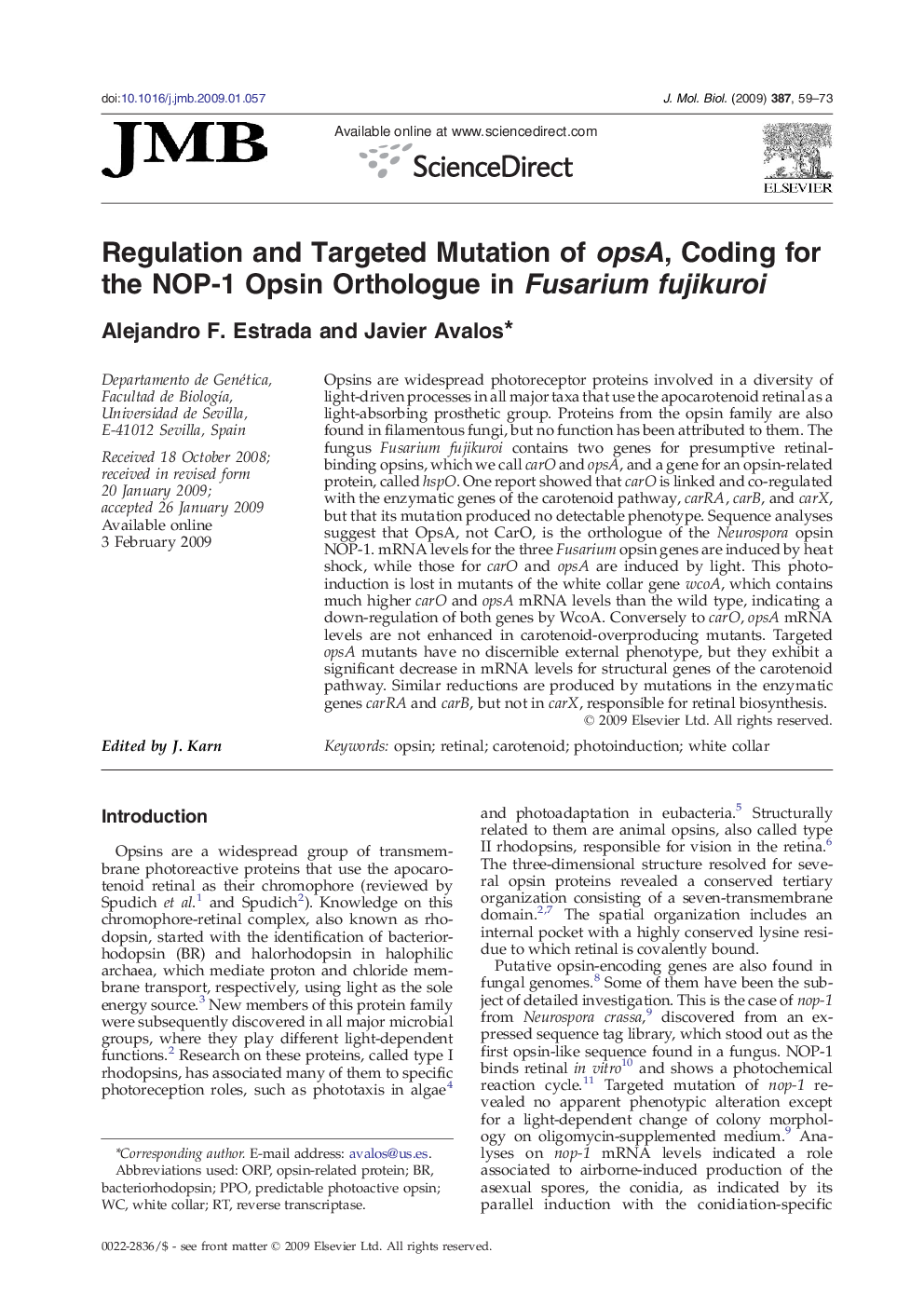| Article ID | Journal | Published Year | Pages | File Type |
|---|---|---|---|---|
| 2186923 | Journal of Molecular Biology | 2009 | 15 Pages |
SummaryOpsins are widespread photoreceptor proteins involved in a diversity of light-driven processes in all major taxa that use the apocarotenoid retinal as a light-absorbing prosthetic group. Proteins from the opsin family are also found in filamentous fungi, but no function has been attributed to them. The fungus Fusarium fujikuroi contains two genes for presumptive retinal-binding opsins, which we call carO and opsA, and a gene for an opsin-related protein, called hspO. One report showed that carO is linked and co-regulated with the enzymatic genes of the carotenoid pathway, carRA, carB, and carX, but that its mutation produced no detectable phenotype. Sequence analyses suggest that OpsA, not CarO, is the orthologue of the Neurospora opsin NOP-1. mRNA levels for the three Fusarium opsin genes are induced by heat shock, while those for carO and opsA are induced by light. This photoinduction is lost in mutants of the white collar gene wcoA, which contains much higher carO and opsA mRNA levels than the wild type, indicating a down-regulation of both genes by WcoA. Conversely to carO, opsA mRNA levels are not enhanced in carotenoid-overproducing mutants. Targeted opsA mutants have no discernible external phenotype, but they exhibit a significant decrease in mRNA levels for structural genes of the carotenoid pathway. Similar reductions are produced by mutations in the enzymatic genes carRA and carB, but not in carX, responsible for retinal biosynthesis.
